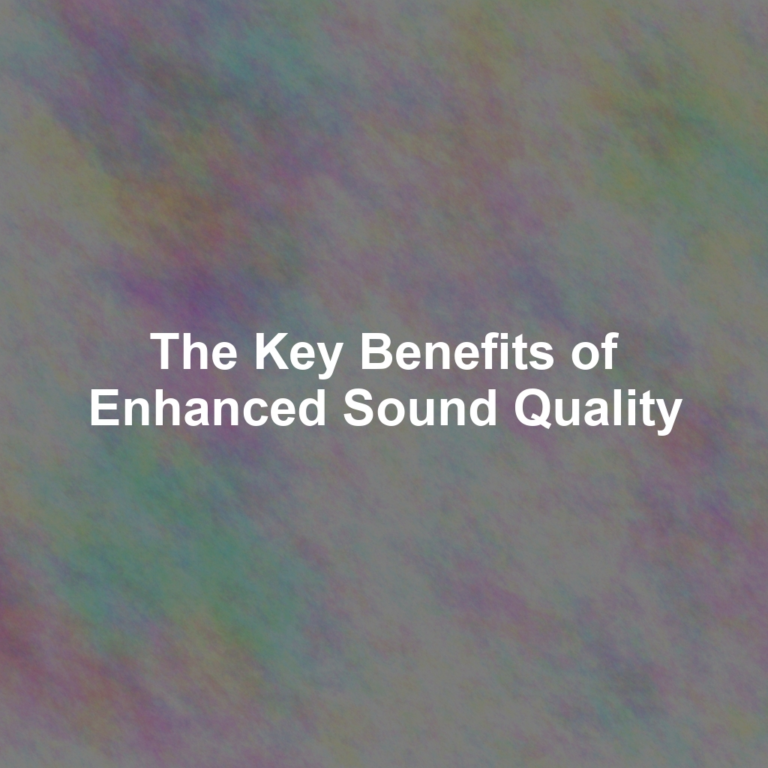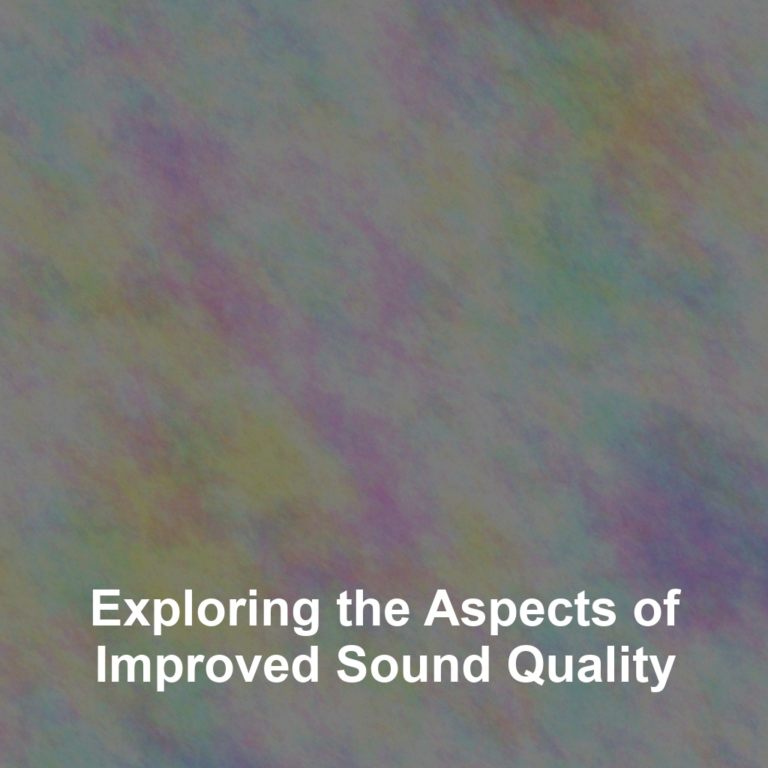When you listen to music, watch movies, or immerse yourself in a podcast, youG??re not just filling your ears with sound; youG??re seeking an experience, an emotion, a moment of connection with the artistry. To achieve this, youG??ve got to choose the right sound qualityG??tailored to your needs, your environment, and your equipment.
ItG??s not simply about the highest numbers on a spec sheet or the most expensive gear on the market. Instead, you need to consider whatG??s best for you: whether thatG??s the warm analog tones of a vinyl record, the crispness of a lossless digital file, or something in between.
As you ponder your options, keep in mind that the perfect sound quality is subjective and multifaceted, involving more than just technicalities. Stay tuned, as weG??re about to explore how to discern the nuances and make an informed choice that resonates with your personal audio preferences.
Assess Your Listening Habits
To make an informed decision about sound quality, first consider when, where, and how often you engage with music or audio content. If youG??re constantly on the move, youG??ll need gear thatG??s portable and durable. You donG??t want to lug around heavy equipment or worry about delicate pieces getting jostled in your bag.
In contrast, if youG??re a homebody who loves immersing yourself in the nuances of sound, investing in a high-fidelity system could be worth every penny. YouG??re likely to appreciate the depth and clarity that come with a more sophisticated setup.
Think about the environments youG??re in as well. Noisy places like gyms or public transport demand headphones with good noise isolation. You wonG??t fully benefit from high-resolution audio if you canG??t hear it over the din around you.
Lastly, assess how audio quality affects your mood and performance. If youG??re an audiophile, poor sound might grate on your nerves. But if youG??re more of a casual listener, you mightnG??t notice or mind subtler sound discrepancies. Your listening habits are key to identifying what G??perfectG?? sound quality means for you.
Understand Audio Specifications
Grasping the meaning behind audio specifications can empower you to make smarter choices about your sound equipment. When youG??re sifting through the specs, itG??s like decoding a secret language where every term gives you insight into the performance of the gear youG??re eyeing.
HereG??s a cheat sheet to get you started:
-
This tells you the range of sound that the equipment can reproduce.
-
The wider the range, the more youG??ll catch those deep bass notes and crystal-clear highs.
-
Sensitivity
-
Measure of how effectively a speaker converts power into sound.
-
The higher the sensitivity, the louder your speaker will be at a given power.
Understanding these specs isnG??t just about numbers and jargonG??itG??s about envisioning how your music will come to life. ItG??s imagining the thump of the bass in your chest or the delicate strum of a guitar right in your room.
Compare Audio Formats
Now that youG??re familiar with audio specifications, letG??s examine how different audio formats can impact your listening experience. YouG??ve likely come across MP3, AAC, WAV, FLAC, and perhaps even DSD files. Each has its merits, and choosing the right one can elevate your audio enjoyment.
MP3 and AAC are lossy formats, meaning they compress audio data to save space, at the cost of some sound quality. TheyG??re perfect if you need to conserve storage or stream over limited bandwidth. Despite the compression, a well-encoded AAC or MP3 file can still sound excellent to most ears.
WAV, on the other hand, is a lossless format that retains all the audio data from the original recording. It offers better sound quality but results in larger file sizes. Similarly, FLAC compresses without losing quality, giving you smaller files than WAV with the same high fidelity.
For the ultimate in sound quality, DSD files provide a super high-resolution experience but require compatible equipment and can be large in size.
Consider your storage capacity, internet bandwidth, playback device, and how discerning your ear is. Are you content with the convenience of MP3s, or do you crave the pristine sounds of lossless audio? Your preferences and circumstances will guide the best choice for you.
Choose the Right Equipment
Selecting the appropriate playback equipment is crucial for experiencing the full quality of your chosen audio format. The marketG??s flooded with options, and itG??s easy to get swamped. HereG??s how you can keep your head above water:
-
Speakers:
-
For your room: DonG??t cram huge speakers into a small space. Match the speaker size to your roomG??s acoustics.
-
For your ears: Trust them! If it sounds good to you, thatG??s what matters.
-
Headphones:
-
Wired vs.-?Wireless: Wired can offer better quality without battery worries, but wireless provides freedom.
-
Over-ear vs.-?In-ear: Over-ear headphones are great for home use, while in-ear buds are portable and convenient.
YouG??ve gotta think about compatibility, too. Ensure your speakers or headphones can handle the range of sounds in your files. DonG??t skimp on the details. If youG??re all about that bass, make sure your equipment can deliver it without distortion. And remember, you donG??t have to break the bank. Often, the sweet spot for price and quality isnG??t at the top of the range. ItG??s about finding whatG??s right for you, for your space, and for your wallet.
Test and Tweak Settings
Once youG??ve chosen your equipment, itG??s essential to dive into the settings to fine-tune your listening experience. DonG??t be intimidated by the myriad of dials and sliders; theyG??re your tools to sculpt the sound to your taste. Start by playing a track you know well and listen carefully. Adjust the bass, treble, and midrange to find the balance that pleases your ear.
If your gear has an equalizer (EQ), experiment with it. This feature allows you to amplify or diminish specific frequency ranges. Boost the lows for a thump in bass-heavy music, or tone them down if youG??re after a clearer, more detailed sound. Similarly, tweaking the highs can enhance clarity or reduce harshness.
Remember that the perfect setting for one type of music wonG??t necessarily be ideal for another. You might want a flat EQ for classical pieces to preserve the natural balance, but a more dynamic setting for rock or pop. ItG??s a process of trial and error, so take your time.
Lastly, donG??t forget about the room youG??re in. Room acoustics can significantly impact sound quality. If possible, position your speakers to minimize reflections and adjust your settings to compensate for any acoustic anomalies. Your ears will thank you for the effort.
Conclusion
YouG??ve now got the tools to find your sound nirvana. Reflect on your listening habits, grasp those specs, compare formats, and pick gear that resonates with you.
DonG??t shy away from experimenting with settings until every note hits just right. Trust your earsG??theyG??ll tell you when youG??ve struck audio gold.
Remember, the perfect sound quality isnG??t a standard; itG??s what perfectly satisfies your ears and soul. So go ahead, fine-tune your auditory experience and enjoy every beat.











